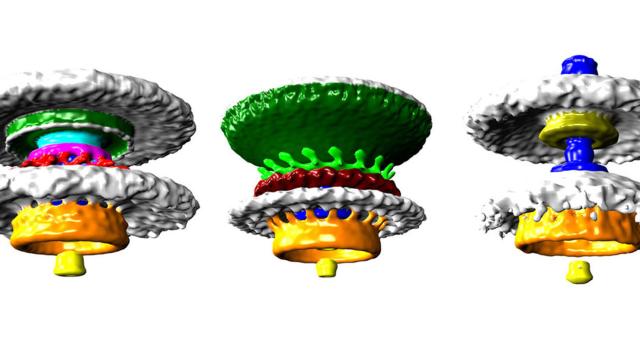We’ve known for years now that some bacteria have tails known as flagellum to propel them forwards, but we’ve never managed to take a detailed look at what powers them. These new images, however, reveal how the naturally occurring motors work.
New Scientist reports that researchers from Imperial College London have used a technique called electron cryotomography — which freezes samples and images them using electron microscopy — to get a glimpse of these biological engines. The images reveal that different bacteria have rather different motors, though they all appear to have a series of fixed rings — the equivalent of a stator — at their base. This fixed section allows them to create a torque that enables their propeller-like tail to drive them forwards.
Interestingly, some bacteria have more and larger stators than others, which in turn allow them to create large torques and greater forward thrust. Campylobacter, for instance, has twice as many as Salmonella, allowing it to drive itself forward hard enough to wriggle inside your gut wall. Great?
[PNAS via New Scientist]
